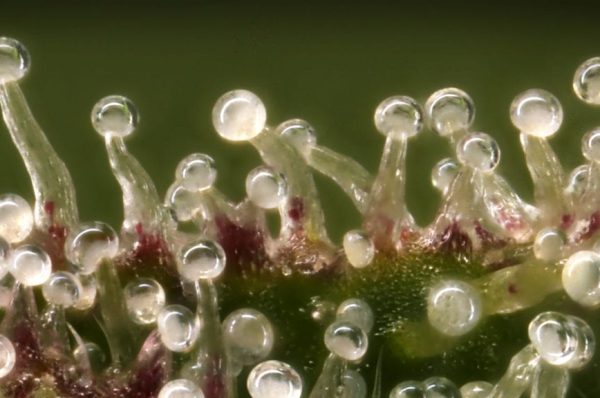Cannabis, a plant that has captivated cultures worldwide for centuries, is not only renowned for its psychoactive and therapeutic effects but also for its complex chemical makeup, which includes a fascinating group of compounds known as terpenes. These aromatic compounds are responsible for the distinctive scents and flavors of cannabis strains, ranging from the sweet, fruity notes to the earthy, pine aromas. However, terpenes’ significance extends beyond their sensory appeal; they also play a crucial role in the plant’s therapeutic properties. This blog post delves into the aromatic world of cannabis terpenes, providing a comprehensive introduction to the top terpenes, their uses, extraction methods, and their distribution within the cannabis plant.
What Are Terpenes?
Terpenes are aromatic compounds found in many plants, including cannabis. They are produced in the trichomes of the plant, which are the tiny, crystal-like glands that cover the leaves and buds. Terpenes are not unique to cannabis; they are responsible for the fragrance of many herbs, fruits, and flowers. In nature, terpenes serve several purposes, including deterring herbivores, attracting pollinators, and protecting the plant from environmental stresses.
Top Terpenes in Cannabis and Their Uses
Cannabis plants contain over 100 different terpenes, each contributing to the unique aroma and potential therapeutic effects of different strains. Here are some of the top terpenes found in cannabis:
- Myrcene: Often found in high concentrations in cannabis, myrcene has a musky, earthy scent reminiscent of cloves. It is believed to have sedative effects and can enhance the psychoactive effects of THC.
- Limonene: This terpene gives citrus fruits their fresh, zesty scent. In cannabis, limonene is associated with mood elevation and stress relief. It’s also noted for its antifungal and antibacterial properties.
- Caryophyllene: With a spicy, woody aroma, caryophyllene is unique because it can also act as a cannabinoid, binding directly to CB2 receptors and offering potential anti-inflammatory benefits.
- Pinene: As the name suggests, pinene has a sharp, pine scent. It’s known for its anti-inflammatory, bronchodilator (helps improve airflow to lungs), and anti-anxiety properties.
- Linalool: This terpene, with a floral lavender aroma, is known for its calming effects and is often used to combat anxiety and stress.
- Humulene: Found in hops, basil, and cannabis, humulene has an earthy, woody aroma and may have anti-inflammatory and appetite-suppressant properties.
- Terpinolene: With a complex aroma that blends notes of pine, floral, herb, and citrus, terpinolene is thought to have antioxidative and sedative effects.
Extraction of Terpenes from Cannabis
The extraction of terpenes from cannabis is a delicate process that aims to preserve their aromatic properties and therapeutic benefits. Common methods include:
- Steam Distillation: This traditional method uses steam to vaporize terpenes, which are then condensed back into liquid form.
- Hydrodistillation: Similar to steam distillation, but the plant material is boiled in water instead of being exposed to steam.
- CO2 Extraction: A modern, efficient method that uses pressurized carbon dioxide to pull terpenes and other compounds from the plant. This method is highly controllable and can preserve the purity of terpenes.
- Solvent Extraction: Involves using solvents like ethanol or butane to extract terpenes, though there’s a risk of solvent residues being left behind if not properly purged.
Where Terpenes Are Found in Cannabis Plants
Terpenes are most abundantly found in the trichomes of the cannabis plant, which are most concentrated on the flowers, or buds, and to a lesser extent on the leaves. The production and composition of terpenes in cannabis are influenced by various factors, including the plant’s genetics, age, climate, soil type, and even the time of day.
Conclusion
The study of cannabis terpenes is a burgeoning field that intertwines botany, chemistry, and pharmacology. As research progresses, we’re beginning to understand how terpenes contribute not just to the sensory experience of cannabis but also to its therapeutic potential. The exploration of terpenes has led to a greater appreciation for the plant’s complexity and a more nuanced approach to its use. Whether through breeding specific strains to enhance certain terpenes or refining extraction methods to capture their essence more effectively, the quest to understand and utilize cannabis terpenes is at the forefront of cannabis science and culture.




